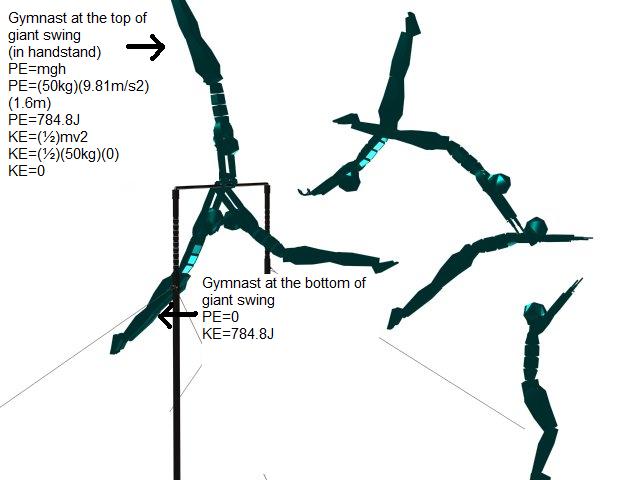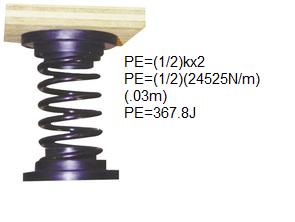POTENTIAL ENERGY PE=mgh Potential energy is energy conserved within a system, that can be transferred to Kinetic Energy. In gymnastics, a gymnast has potential energy usually whenever she is at the top of a skill, such as in a handstand position on top of bars.
In this picture below, this concept of potential energy at the top of the giant swing, and kinetic energy at the bottom is shown. Notice how PE and KE switch values from bottom to top. |
KINETIC ENERGY KE=1/2mv2 Kinetic Energy is the energy an object has due to its motion, or the work needed to accelerate a mass from rest to a certain velocity. A gymnast would have her maximum kinetic energy at the point opposite of where her maximum potential energy was, therefore at the bottom of a giant swing on bars, a gymnast has her greatest kinetic energy.
|
|
 ELASTIC POTENTIAL ENERGY PE=1/2kx 2 Elastic Potential Energy is the energy stored in an elastic object, such as a spring. Hooke's Law states that the force required to stretch the spring is directly proportional to length the spring stretches. In gymnastics, springboards are used for the gymnast to jump off to vault. Different springs and amounts of springs are used to suit the gymnast.
 |
||